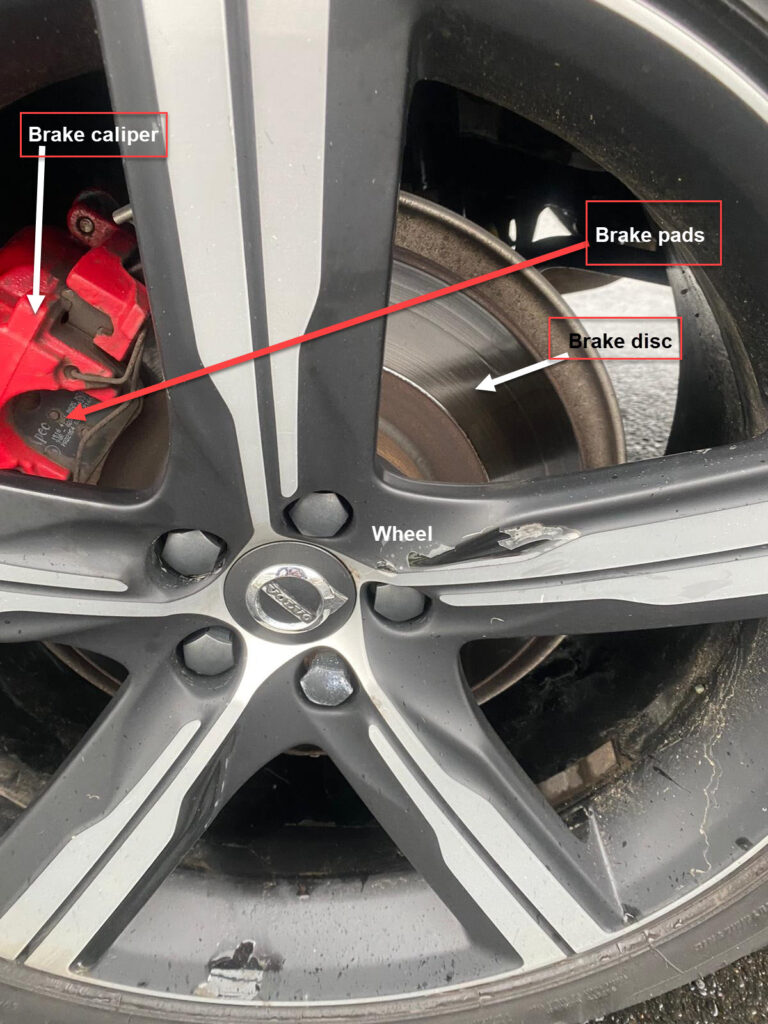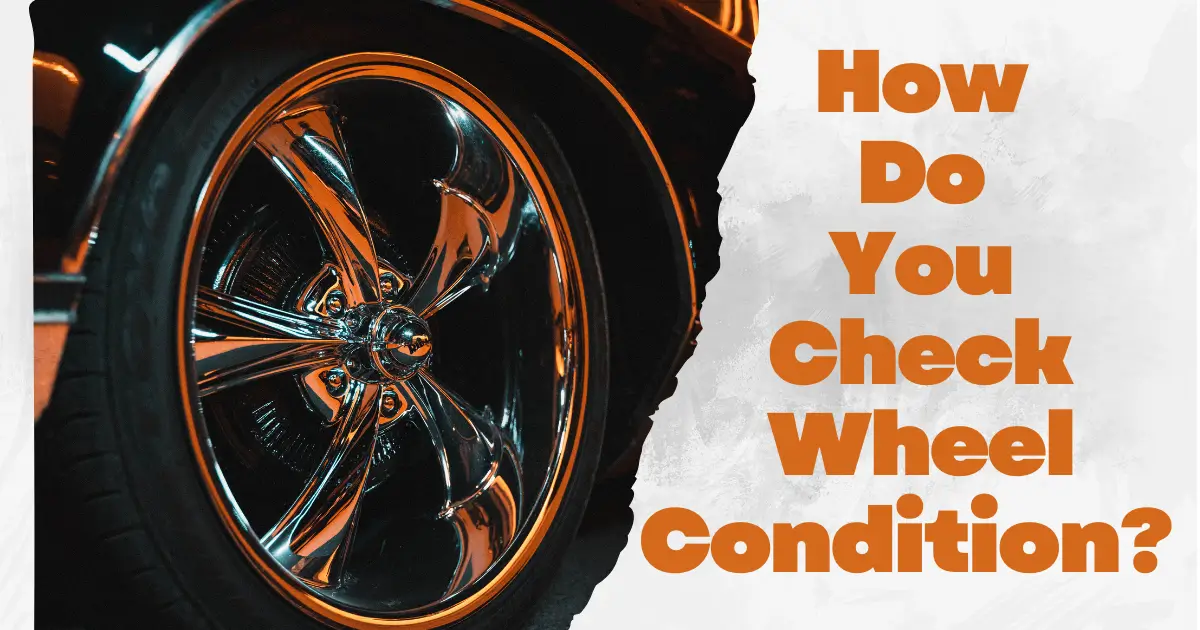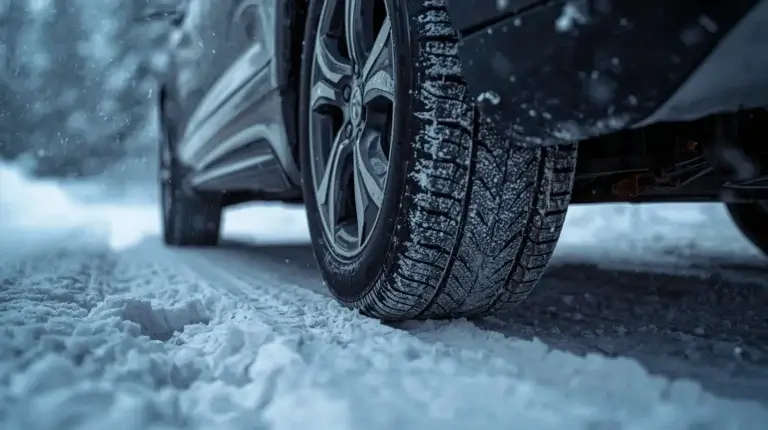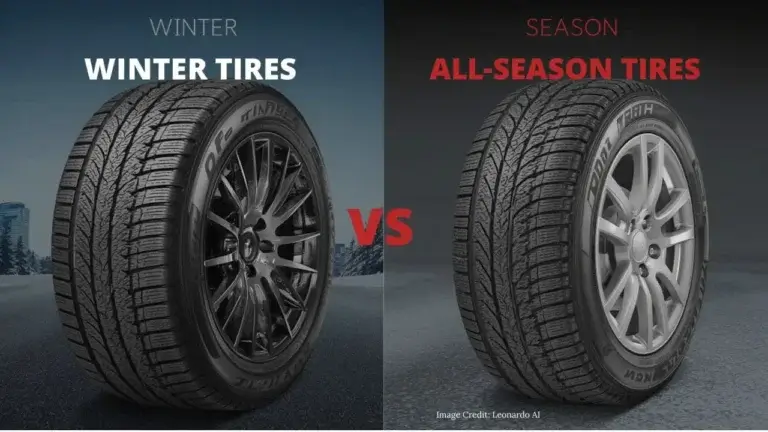When it comes to maintaining your vehicle’s safety and performance, knowing how to check wheel condition is essential. Wheels, being a critical component of any vehicle, require regular inspection to ensure they are in optimal condition.
This blog post will guide you through the necessary steps to examine your wheels thoroughly, identifying any signs of wear, damage, or alignment issues. By following our expert advice, you can ensure your vehicle remains safe on the road, offering you peace of mind during your travels. Let’s dive into the details of checking your wheel condition effectively.
To check wheel condition, visually inspect for damage and use a tread depth gauge to assess wear. Press a penny into the tread grooves to estimate remaining tread life.
Ensuring your vehicle’s wheels are in good condition is critical for safe driving and vehicle performance. Regular wheel inspections can identify issues like uneven tread wear, cracks, and foreign objects that may compromise safety. Checking the wheel condition involves a series of steps that even a novice driver can perform.
By assessing both the physical state of the wheel and the tire’s tread depth, drivers can maintain optimal traction and avoid potential hazards on the road.
Timely wheel maintenance not only improves your driving experience but also extends the life of your tires, saving you from unexpected costs and contributing to better fuel efficiency. With safety as a priority, a guide to checking your wheel condition can be a valuable tool for every car owner.

Credit: carexamer.com
Introduction To Wheel Health
Paying attention to wheel health is vital for your vehicle’s performance.
Riding on well-maintained wheels ensures safety and enhances your car’s efficiency. Understanding how to check the condition of your wheels is an important aspect of vehicle maintenance.
Significance Of Maintaining Wheels
Regular wheel checks prevent breakdowns and enhance safety. Properly maintained wheels help:
- Ensure smooth drives
- Avoid premature tire wear
- Save fuel
- Maintain wheel alignment
- Prevent accidents
Consequences Of Neglected Wheel Care
Neglecting wheel maintenance leads to:
- Increased risk for blowouts
- Uneven tire wear
- Reduced vehicle control
- Potential for costly repairs
- Compromised safety
Understanding the importance of wheel care is crucial for any driver.
Stay vigilant about your vehicle’s wheels, and enjoy a trustworthy, smooth ride every time.
Visual Inspections
Visual inspections are a simple yet effective way to ensure your wheels remain in top condition. Before diving under the hood, start with what’s visible to the eye. By regularly checking your wheels visually, you can spot issues early, save money, and keep driving safely.
Spotting Wear And Tear
Look closely at your tires for signs of aging. Bald spots, cracks, or bulges on your tires mean they need attention immediately. Consistent checks keep you aware of the tire’s health.
- Tread depth: Use a penny to measure. If you see the top of Lincoln’s head, get new tires.
- Surface defects: Cracks or cuts suggest it’s time to visit a professional.
Identifying Rim Damage
Rims give support to your tires. Damaged rims cause air leaks and affect your drive. Be on the lookout for:
- Bends or dents: May cause vibration or air loss.
- Scrapes or scratches: Check for more than cosmetic damage.
Checking For Uneven Wear
Uneven wear shortens tire life. It also hints at other problems:
| Wear Type | Possible Causes |
|---|---|
| Center wear | Overinflation |
| Edge wear | Underinflation or alignment issues |
| Patchy wear | Balancing problems |
Regular check-ups and maintenance prevent costly repairs. Wheels carry us every day. Treat them well for a smooth journey ahead.
Tire Tread Depth
Knowing tire tread depth is key to safe driving. Tires with proper tread grip roads better. Tires with low treads are risky. They can cause accidents, especially in wet conditions. Check tire tread depth to ensure your wheels are ready for any journey.
Measuring Tread Wear
Measuring tread wear is simple. Use a tread depth gauge to measure in 32nds of an inch. No gauge? No problem. Use the penny test. Insert a penny into the tread with Lincoln’s head upside down. Can you see all of his head? If yes, the tire tread is low.
Interpreting Tread Depth Results
Understand what the numbers mean. Tread depth greater than 6/32 inches is good. Between 4/32 and 6/32 inches, start planning for new tires. Anything below 2/32 inches is a warning. Your tires are not safe. Replace them immediately.
| Tread Depth | Condition |
|---|---|
| 6/32 inches or more | Good |
| 4/32 to 6/32 inches | Warning |
| 2/32 inches or below | Replace Tires |
Air Pressure Checks
Maintaining the right air pressure is crucial for safe driving. It influences grip, fuel efficiency, and wear. Regular checks ensure tires perform as expected. Don’t overlook this simple task.
Proper Techniques
Checking tire pressure is straightforward. Follow these steps:
- Use a reliable gauge.
- Check pressure when tires are cool.
- Remove the valve cap.
- Press gauge onto the valve.
- Read the pressure and compare.
- Refill or release air as necessary.
- Replace the valve cap securely.
Check all tires, including the spare. This helps avoid sudden punctures.
Optimal Pressure Values
Each vehicle has a recommended tire pressure. Find this in the manual or on the door jamb. The right pressure maximizes safety and efficiency.
| Vehicle Type | Front Tire | Rear Tire |
|---|---|---|
| Sedan | 32 psi | 32 psi |
| SUV | 35 psi | 35 psi |
| Truck | 38 psi | 40 psi |
Check the table above for a quick reference. Always consult your vehicle’s manual for exact specifications. Different weather conditions might require adjustments. Keep a tab on these values to ensure a smooth ride.
Wheel Alignment
Proper wheel alignment is key to ensuring your vehicle operates correctly. It impacts tire wear, fuel efficiency, and overall driving stability. Checking and maintaining wheel alignment can prevent a host of driving issues. Let’s delve into symptoms of misalignment and the benefits of regular checks.
Symptoms Of Misalignment
Recognizing poor wheel alignment early saves time and money. Here are common signs:
- Uneven Tire Wear: Check each tire for wear patterns.
- Vehicle Pulling: A car pulling to one side often indicates alignment issues.
- Steering Wheel Off-Center: If the steering wheel isn’t straight while driving straight, it’s time to check alignment.
- Vibrations: A shaking steering wheel suggests alignment problems.
Benefits Of Regular Alignment Checks
Consistent alignment checks bring multiple benefits:
- Extended Tire Life: Correct alignment prevents premature tire wear.
- Improved Fuel Efficiency: Aligned wheels reduce rolling resistance.
- Better Handling: A well-aligned car drives smoothly.
- Safer Driving: Properly aligned wheels contribute to safer driving.

Credit: www.dreamstime.com
Wheel Balancing
Proper wheel balancing is crucial for a smooth ride and long tire life. It involves adjusting the weight around your vehicle’s wheels. This process promotes even tire wear and optimal driving performance.
Importance Of Balanced Wheels
Balanced wheels ensure a smoother drive, and prevent unnecessary strain on your vehicle’s suspension. If wheels are imbalanced, they could lead to vibrations in the steering wheel, seat, or floorboard, especially at higher speeds.
- Better handling and control of the vehicle
- Reduced tire wear
- Improved fuel efficiency
- Decreased stress on drivetrain
Understanding Balancing Process
The balancing process requires precision equipment to identify where the balance is off. Technicians then add small weights to the rim to counterbalance any heavy spots.
| Step | Action | Result |
|---|---|---|
| 1. | Mount tire on balancer | Prep for measurement |
| 2. | Enter wheel dimensions | Accurate calibration |
| 3. | Spin to measure imbalance | Locate heavy spots |
| 4. | Attach corrective weights | Achieve balance |
Once the weights are attached, the wheel gets a second spin to confirm proper balance. This ensures a safe and pleasant driving experience.
Checking For Vibrations
Vibration while driving is a common warning sign of potential wheel issues. It’s essential to determine the source. Identifying vibrations early can prevent major repairs. Pay attention to when and how your vehicle vibrates. This could be a clue to the wheel condition. Let’s dive into the common causes of wheel vibrations and understand when to seek professional help.
Common Causes
Different issues can cause wheel vibrations. Here’s a quick rundown:
- Unbalanced tires often lead to noticeable shaking.
- Worn-out brake rotors can also bring about vibrations, especially when braking.
- Loose wheel bearings might be the culprits behind that unsettling rumble.
- Misaligned wheels create unevenness felt while driving.
- Lastly, damaged suspension components impact ride quality significantly.
When To Seek Professional Help
If regular checks don’t solve the vibration, get expert assistance. Below are clear indicators:
- Vibrations that increase with speed.
- Shaking that occurs only when braking.
- Persistent shaking despite wheel balancing.
- Noise accompanying vibration merits a quick visit to the mechanic.
Properly functioning wheels are crucial for safety and performance. Address vibrations promptly to ensure a smooth ride.
Bolt And Lug Nut Security
Keeping wheels securely attached to a vehicle is critical for safety. Bolts and lug nuts hold your tires in place as you drive. Checking their security ensures your journey remains safe. Below are key checkpoints for maintaining bolt and lug nut security.
Ensuring Proper Tightness
Correct torque is essential for wheel safety. Use a torque wrench to check for proper tightness. Follow the manufacturer’s specifications for the best results. Here’s a simple step-by-step guide:
- Park on a level surface and apply the parking brake.
- Remove hubcaps or wheel covers, if present.
- Position the torque wrench on the bolt or lug nut.
- Turn the wrench until it clicks, indicating the correct tightness.
- Repeat for each bolt or lug nut in a star pattern.
Re-check after any tire change or if you suspect loosening.
Impact Of Loose Bolts
Loose bolts can cause serious problems. They threaten wheel integrity and road safety. The effects of loose bolts include:
- Wheel wobbling or vibration while driving.
- Premature tire wear due to uneven distribution of forces.
- Risk of wheel detachment, leading to loss of vehicle control.
Regular checks prevent these dangers. Tighten to the recommended torque after any wheel disturbance.
Professional Wheel Inspections
Your car’s wheels are vital to its performance and safety. Regular checks maintain their condition. Sometimes, a deeper look is necessary. This is where professional wheel inspections come in. Mechanics have the tools and know-how to spot issues you might miss. Here’s what to know when it’s time to seek a pro, and what happens during their examination.
When To Consult A Mechanic
It’s not always clear when to see a mechanic for your wheels. Look out for these signs:
- Vibrations while driving
- Noises coming from the wheels
- Uneven tire wear, which can point to balance issues
- Wheels that have recently encountered potholes or curb strikes
- Pull to one side when driving
- Damaged rim edges
These signs signal the need for a professional checkup. Don’t wait for yearly inspections. Address these signs promptly.
What To Expect During A Professional Check
Dropping off your vehicle at the garage? Here’s a rundown of what a pro will do:
- Visual inspection: Checking for visible signs like cracks or bends.
- Balance check: Ensuring the wheel’s weight is evenly distributed.
- Alignment: Aligning the wheels for straight, smooth driving.
- Tire condition assessment: Looking at the tread, sidewalls, and tire pressure.
- Suspension components review: Examining shocks, struts, and more.
The mechanic might use a balancing machine or an alignment rack. They will tell you if your wheels need fixing or replacing. Work with trusted auto shops for the best service.

Credit: www.vecteezy.com
Maintenance Tips
Proper maintenance keeps wheels in top shape. Regular checks ensure safety and performance. Learn how to keep your wheels rolling smoothly with these essential tips.
Routine Care Practices
Maintaining wheels involves frequent inspections and care.
- Inspect tire pressure monthly: Use a reliable tire gauge.
- Look for wear and tear: Check treads and sidewalls for damage.
- Examine wheel alignment: Straight wheels reduce tire stress.
- Clean wheels regularly: Remove dirt and debris to avoid damage.
- Monitor lug nuts: Ensure they are snug and secure.
Longevity Tips For Wheels
Extending wheel life is easy with the right habits.
- Rotate tires: Every 5,000 to 7,000 miles for even wear.
- Avoid potholes: Sudden impacts can harm wheels.
- Use correct wheel cleaners: Some chemicals can corrode or damage.
- Balance wheels: Imbalanced wheels lead to uneven wear.
- Replace when needed: Don’t delay new tires or wheel repairs.
Conclusion
Regular checks on your wheel condition ensure both safety and performance on the road. By following the tips shared, you can spot issues early and take action. Remember, well-maintained wheels are key to a smoother ride. Stay on top of wheel care and embrace a worry-free driving experience.




